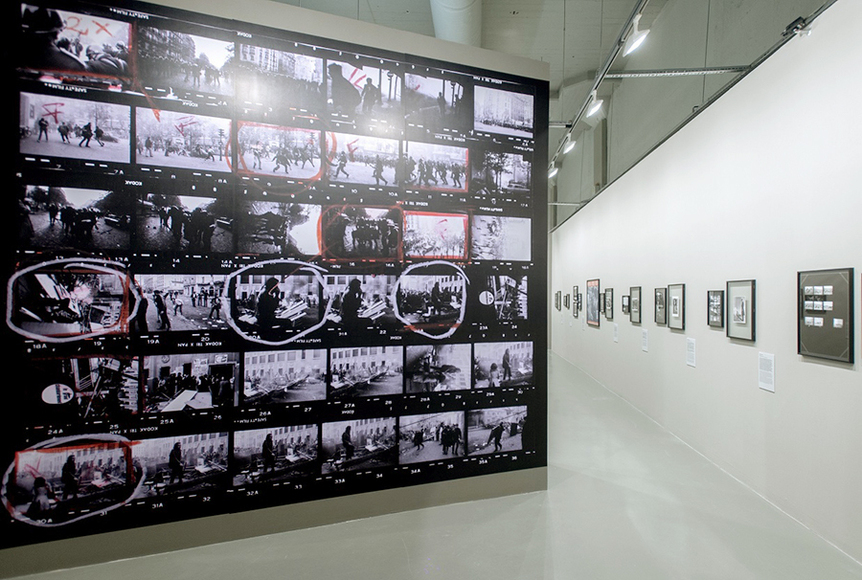
R
E
V N
E
X
T
Currently on view through August 2, 2015, at Istanbul Modern’s Photography Gallery, is “Magnum – Contact Sheets,” perhaps the most intriguing show ever presented on photography. Comprised of 60 contact sheets and a video installation, the exhibition presents a total of 133 works by some of the most influential Magnum photographers—one of the most prestigious photographic agencies founded in Paris in 1947—including Henri Cartier-Bresson, Robert Capa, Elliott Erwitt, Eve Arnold, Josef Koudelka and Rene Burri, to name a few.
In the pre-digital era of photography, the contact sheet is a direct print of a roll or sequence of negatives, a record of one’s shooting. It serves as a tool for editing as well as an index to archive the negatives. However, much more than that, the contact sheet provides an intimate glimpse into the photographer’s working process, as it records each moment they capture. When viewing a contact sheet, it’s as if one is accompanying the photographer and seeing the world through their eyes.
Among the show’s many iconic images are those that immortalize historic moments such as the Hungarian Uprising of 1956 by Erich Lessing; the Soviet invasion of Czechoslovakia in 1968 by Josef Koudelka; the lone protestor who stood in front of tanks in Beijing’s Tiananmen Square on July 5, 1989, by Stuart Franklin; and a group of young people in East River, New York, on the morning of September 11, 2001, by Thomas Hoepker. The exhibit also includes memorable portraits of political figures, actors, artists and musicians of the 20th century such as Salvador Dali, Ernesto “Che” Guevara, Martin Luther King and The Beatles.
On a personal level, the most compelling aspect of the exhibition is that viewers have the opportunity to see the image-making process, from the raw photos on the contact sheet to the selected image and its final form. By seeing the unrefined version of the final selection,the exhibition reveals the mistakes, lost moments, randomness, as well as interventions by the photographer during the printing process.
The contact sheet, now rendered obsolete by digital photography, embodies much of the appeal as the act of photographing itself: the sense of time unfolding, a tangible trace of movement through space, a glimpse into the artist’s mind that suggests that “what I’m seeing is worth recording” and an apparent authentication of photography’s claims in accurately documenting reality.
Billy Kung is photo editor at ArtAsiaPacific.



